By Caroline Alphonso
A steady flow of customers walk in and place their orders at the Harvey’s restaurant tucked between an arcade and a shopping mall on Yonge, north of Dundas. John Mikrogianakis, owner of the business and building it is housed in, stand behind the register. When I introduce myself to Mikrogianakis, he asks me to step to the left of the register with him. He says he can only speak to me briefly. We have rescheduled this interview once already because he was too busy with customers. Through the corner of my eye, I see a group of students entering the restaurant. Mikrogianakis also spots them and gets me to ask my first question. He answers abruptly about the opening of his business before rushing to take an order.
Mikrogianakis is a busy man, but running his business is not tiring him out. What he is tried of is how the city ahs treated him. His property, along with 11 others around Yonge and Dundas St., has been expropriated to make way for a public square and entertainment complex. Mikrogiankis has to leave by Jan. 15, 1999 and doesn’t know where he is going to go. He hasn’t found a suitable location to move his restaurant to. “This is my living,” he says. “I thought I live in a free enterprise society. But I have no choice.”
He is angry.
After fighting through the recession, Mikrogianakis thought his struggles were over. But he didn’t foresee an even more difficult battle to come — a war against the city.
He wanted to use this property to fund his retirement, but he is now left with nothing. Mikrogianakis, like other property owners in the area, has no qualms about redeveloping this busy strip known for its tacky ambience. But he is infuriated that the city swooped in without warning and took away the property and business he worked hard to build.
City councilor Kyle Rae, who is among the politicians who have condemned this area, says the properties on this stretch are disgusting, poorly managed and have added to the area’s downfall. But instead of cleaning up the streets, the city decided to redevelop the area.
Mikrogianakis is one of many owners who fought to try to convince the city to change its mind. Together they put $1.7 million into their legal attack. But they eventually realized there was little they could do to sway the city’s course. The city and big businesses had a set plan for the intersection, and the property owners didn’t figure it out until it was too late. The city said the owners would be fairly compensated. The owners said this wasn’t good enough — they had toiled to keep their properties from sinking. They had not survived on this street for so many years for a quick buy. They, like any other local business, had a stake in this street. Now all they are getting for that stake is cash, as their properties are torn apart.
Makrogianakis worked hard to get where he is, so he wasn’t going to give up without a fight. When he arrived in Canada at the age of 15, he started working as a dishwasher, then became a cook and later a restaurateur. He opened a restaurant in Toronto with his brother-in-law, Tom Perdikis, in 1965, but it was acquired by the city. Now, the city is taking away his land again. This time Mikrogianakis didn’t wage a solitary war. All owners on the east side of Yonge and Dundas Sts., between the HMV music store and the Hard Rock Café, are being tossed of their properties
The area slated for redevelopment encompasses an eclectic line of arcades, fast food joints, electronic outlets and currency traders. One of Vahe Kerim’s contributions to the street is among this array of stores. A few shops down from Harvey’s is Kerim’s Jewellery Exchange, with its name prominently displayed on a bright red sign overhead. Kerim has been a landlord and tenant for the past 19 years. He worked as a sales clerk, and alter a manager of a store in the Eaton Centre in 1978. Now Kerim’s Jewellery Exchange runs in three locations opposite the Eaton Centre, providing retail space for about 65 independent jewellers. One of Kerim’s businesses has flourished on this strip, but the city will replace it with a public square.
When the city announced on Dec. 10, 1996 that owners would have to leave, Kerim began sending memos to his tenants, assuring them the redevelopment project had not yet been finalized.
Besides facing expropriation, owners had to deal with the possibility of tenants, who now faced uncertain futures, leaving. So property owners came together to fight, or at least stall, the city’s plans.
Ron Soskolne, program director of the Yonge Street Regeneration Project, once said owners were jealous of each other and unwilling to work together. But this changed when the city began sending out expropriation letters. The owners now had a common foe that threatened their businesses.
But they didn’t have much time to mobilize. Six months later, city council had approved the details of the deal giving AMC theatres and PenEquity the titles of tenant and developer, respectively. The deal was official.
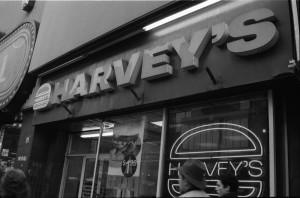
“This is my living. I thought I live in a free-enterprise society. But I have no choice.” -John Makrogianakis owner of Harvey’s, one of the lands to be expropriated.
The stores lined up along the east side of Yonge Street are an eyesore to Torontonians and tourists strolling by. With the 500,000-square-foot Eaton Centre on the west side of Yonge and Dundas Sts., competition has been severe for tenants and owners. Their daily battle to pull people out of the Eaton Centre has forced them to change to suit their customers to merely survive.
The city and local businesses were already trying to clean up the streets, and property owners were part of these plans. This time, owners weren’t consulted. The new plan will help sweep out crime, as well as shops, from the streets. By starting anew and expropriating owners, the city hopes to fix an ailing neighbourhood. But who is to blame for the area’s problems?
City politicians, including former Mayor Barbara Hall, blame property owners for failing to invest in the strip. But owners and tenants cannot carry all the blame for the intersection’s social decay because the city is partly at fault. This strip, with its disheveled appearance, has been the on result of an official zoning regulation. For the past 20 years, the city has paralyzed development in this area with its zero-development laws and lack of investment. The city’s inadequate presence is obvious when the only lights bright enough to guide your path at night come from stores, not street lights.
Should the city have considered changing the zoning law to allow property owners to build anew? But it didn’t seem to want these owners there anymore. Toronto Mayor Mel Lastman once told them to either shape up or ship out. The property owners and their tenants were not making a strong enough effort to improve this area plagued with homelessness and a high crime rate.
Property owners face social decay everyday on the Yonge and Dundas stretch. If you sit in the Harvey’s restaurant for a little while, you’re bound to encounter a homeless person walking in asking for money. It’s the norm on Yonge Street. The street’s critics say this decaying core needs to be revitalized. They say an easy solution would be to build something new and push the crime and social problems away, but this does not eliminate them from the vicinity.
Two men stand at the corner of O’Keefe Lane, north of Gould and east of Yonge this past June. They are in the middle of a drug deal. Undercover Toronto police officers Dwayne Scott and Peter Murphy look on as money and drugs change hands. They walk towards the men, ready to interrupt the trade. Radios squawk as the transaction occurs. The two men were arrested with possessing three ounces of crack-cocaine.
Finding drugs around Yonge and Dundas is easy. The area has been categorized by police officers as an open-air market for drug dealing, and is known for its crack-cocaine deals. If you move north to Yonge and Gerrard, you will easily find weed, hash and acid. It’s easy to deal on this stretch. The alleys and alcoves make it a perfect spot to hide, and there aren’t enough lights along the main streets. Crowds make it easier for dealers and buyers to blend in.
The intersection never sleeps. About one million people walk through the area every week. People wait along all four corners to cross the street. Others shuffle by to get to their destinations. They make their way into the Eaton Centre to warm up on a cool, fall afternoon.
But this influx of pedestrians makes crime more likely to occur — at least three arrests are made every day on average. Businesses complained continuously about crime in the area, so with the help of Toronto police from 52 division, they partnered up to better patrol the busiest strip of the world’s longest street. So began a project named Operation Broom.
The seven-man crew that makes up Operation Broom strolls down the streets. The undercover officers have been poking their heads in every alley and cubbyhole looking for crime, particularly drug dealings, since April 7, 1997. The program was supposed to last only five weeks, but continues to this day. From April to December of 1997, police officers in Operation Broom laid 800 arrests and 1,600 charges.
Det.-Const. Colin McDonald heads the operation. Only one third of his time is spent on the streets, the rest is in the courtroom or in his office doing paperwork. He says you can throw as many police officers on the streets as you want, but it won’t alleviate the problem. McDonald blames the planning of the neighbourhood, with its alcoves for setting a climate for drug dealing. The new entertainment complex to be built on the northeast corner will eliminate some of those alleys, says McDonald. But this wont’ necessarily make drug dealers and buyers leave the surrounding area.
Stan Budd, owner of the Pinball Arcade on Yonge, is tired of having drug dealers and homeless people hang around his property. “It’s so bad down here that it’s hard to operate,” he says. Budd has been a tenant of the property for the past 15 years. He also runs Funland Arcade across the road on Gould and Yonge Sts. The crime in the area was getting so bad Budd had to hire private security. Budd says he doesn’t protest the city’s redevelopment, as long as they police the area properly.
It’s impossible to clean up crime by sending a few more officers to the area. So the city and the Yonge Street Business and Residents Association (YSBRA) tried other methods of cleaning up the street — they attacked litter. In 1996, 60 “lady bug” garbage cans swarmed on the streets. Initiated by the YSBRA, these red and black garbage cans tried to be a cool attempt to clean up the area. But the YSBRA found that cleaning the streets of litter doesn’t mean ridding them of crime.
Their next attempt was to change storefronts on the street in 1996 to make the intersection more friendly and inviting. Owners and tenants blamed the Eaton Centre for attracting pedestrians inside and off the street. By changing the building’s facades, the city hopes to get people black out.
While these small steps were taking place in public, the owners were unaware of the ideas being discussed behind closed doors.
Crime was on the rise and the area was getting more shabby but no one knew if cosmetic changes would be enough. The only solution was to redevelop. The city would collect more taxes and gain a public square. The developers would have free rein to build a theatre megaplex. Local businesses — outside the demolition zone — would gain financially from a revitalization of the neighbourhood. Tourists would be pouring in and Torontonians would enjoy the rebirth. The only loser would be the ones the city will have to buy out. It was time to break the news to the group that drew the short straw.
The bomb dropped when the owners received expropriation letters. The fight began.
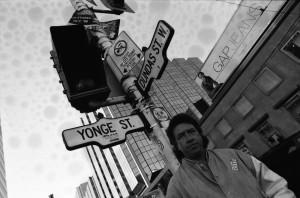
Det. – Const. Colin McDonald heads Operation Broom. He says you can throw as many police officers on the streets as you want, but it won’t alleviate the crime problem. Photo: Jonathan Bjerg Moller.
Gary Stanoulis is the lawyer representing Quam Developments, which owns the building occupied by Kentucky Fried Chicken and Flora Electronics. Quam Developments purchased the property in 1988 for $5.95 million. Stanoulis says the city is not giving them the same amount they paid for it, but would not disclose the figure. He says the city doesn’t really need their property because the theatre doesn’t have to be so big, but if the city wants it, says Stanoulis, it will get it. “The city has become the developer at the expense of property owners.”
The owners wanted their time in court to express their dissatisfaction with the deal and to try to convince the city to change its mind.
The matter went before a tribunal at the Ontario Municipal Board (OMB). Through the winter of 1997 until the spring of 1998, lawyers for both sides wrangled over the deal.
The basis of the city’s argument for expropriation lies under section 28 of the Planning Act, which allows the city to take away lands for the purpose of a community improvement project.
The owners argued this area is not in dire need of improvement under this section — it is not overcrowded, run down or aging. But the city used the clause stating improvement “for any other reason” as justification. This has been used in the past to build roads or sewers. This time in the city says it means to rid the area of crime, vagrants and homeless people. The OMB agreed. The city scored one point over the owners.
The owners also argued they were not allowed to build more than two storeys high under the city bylaw. The new entertainment complex will complex will be over seven storeys high. The city did not permit owners to build higher, so they asked why the city had given the new developers a chance to.
Stephen Waqué, a lawyer representing the city, says if owners wanted to raise their buildings over two storeys high, they simply had to submit application to the city. Since the owners couldn’t convince the city to change its mind, they decided to try something different — they would join the city.
The owners introduced an alternative scheme at the OMB hearings for the Yonge-Dundas redevelopment project, one in which they could participate. They hired an architect and experts who looked at the idea from a transportation and marketing perspective. The scheme called for mixed use, high density development. A 15-storey office building would be built on the southeast side — where the public square will be — that would house retail space on the lower level. On the northeast corner, a similar development would take place. The land occupied by the Salvation Army would house two residential buildings, to attract middle- to upper-class residents.
But Brian Parker, a lawyer who represented some of the owners, says they didn’t have a fair chance to put their plan forward. “The city’s position was that putting offices [there in the area] was too much of a change,” he says. “They had the power to expropriate so they didn’t care about the owners.” Lawyers for the city say that if the owners wanted their plan to be considered, they should have made a formal application to the city. Their alternative scheme came out too late. The owners spent a total of $1.7 million to bring experts, architects and lawyers together to save their properties. In June, 1998, the OMB gave the city permission to proceed with its plan. Mikrogianakis’ and other owners’ cries had been futile.
Mirkogianakis and a few other owners continued to fight by filing an application for a district court judicial review of the OMB decision. The issue was whether the municipal board erred in law in allowing the city to create this planning area. This was dismissed by the district court, who said the OMB decision was final.
The owners then field an application with the court of appeal for leave to appeal the OMB decision. They were rejected again on Oct. 30. Now all the owners have left is to find a new home.
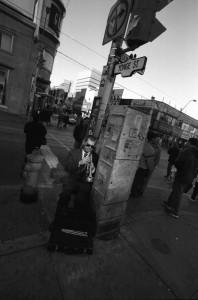
The city hopes the redevelopment will revitalize an area that sees millions of pedestrians every year. Photo: Ping Lam.
At the intersection of Yonge and Dundas, dance music blares onto the streets from the World’s Biggest Jean Store. The two-storey flea market is draped on the outside and inside with women’s clothing. Steve Rockwell, owner and building tenant, has been at this intersection for the past 17 years. He calls me into his small office on the second floor at the back to be interviewed. He’s not too worried about his future, as he has already staked out a new location in Toronto — he won’t reveal where.
Downtown needs development, says Rockwell, who is not disappointed with the progress the city is making. “I’m not married to this building,” he says. “I have more beef than anybody else, but you can’t stand against progress. But when you throw me out, compensate me fairly.”
Rockwell can’t reveal how much he is being compensated. No one will. They are in negotiations with the city right now and all they can look forward to is a fair share. The city has offered all owners and some tenants more than $30 million. But lawyers for the owners say the land is worth between $75 million to $100 million, much more than the price the city is willing to pay.
Mikrogianakis answers my questions within 10 minutes. More customers are coming in and he has to get back to work. It’s always busy here, plus dinnertime will be starting soon. “I feel terrible,” he says.
“They have kicked me out from a good business.” As I leave, I look back and see Mikrogianakis working at the register again. He wont’ be there much longer.


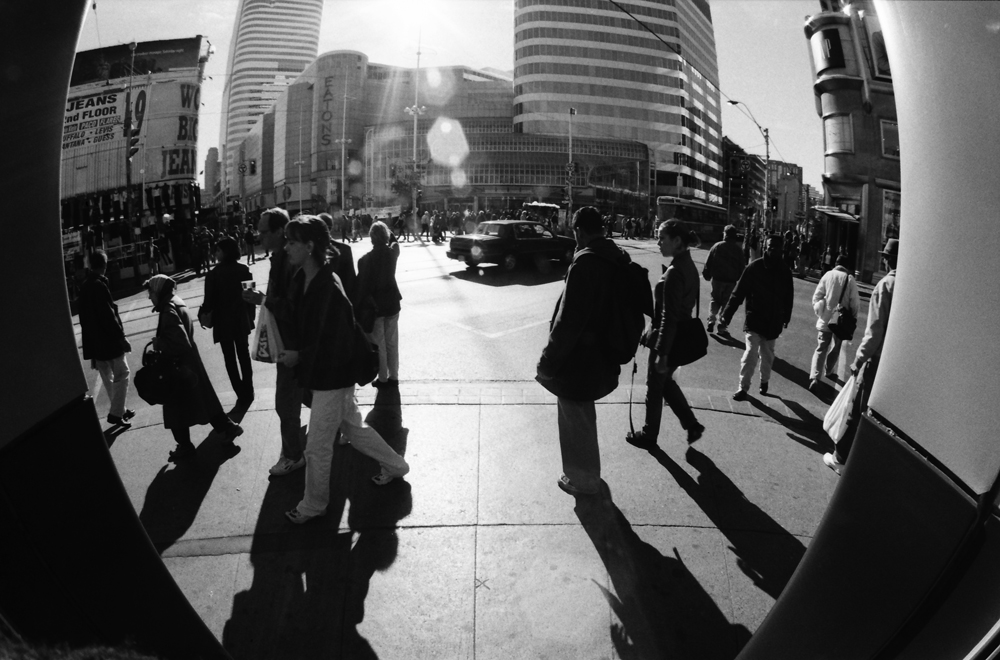
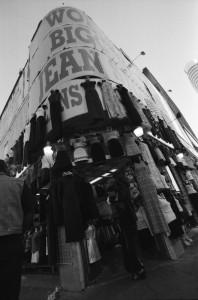
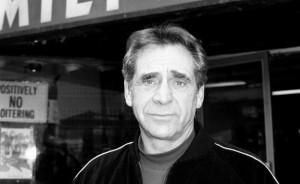








Leave a Reply